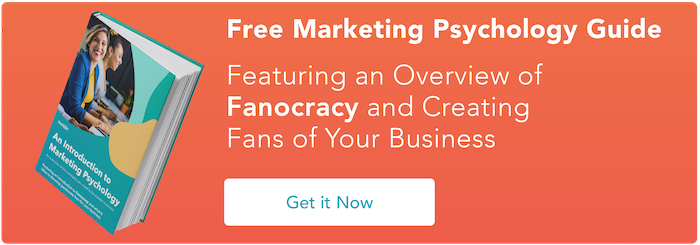The Trust Factor: Harnessing Empathy and Authority to Build a Magnetic Brand

By jj@storybrand.com (J.J. Peterson)
Welcome to Creator Columns, where we bring expert HubSpot Creator voices to the Blogs that inspire and help you grow better.
I hear people talk about the power of “story” in marketing.
The best marketers — and the best brands — are the ones telling the best stories.
However, I believe most brands are telling the wrong story… And it’s costing them millions.
So… Whose story are you telling?
Every story has four characters: the Hero, the Victim, the Villain, and the Guide. Understanding these roles is a game-changer for anyone looking to build a personal brand that actually connects with people.
Why?
Because how you show up in your marketing — whether you realize it or not — shapes how your audience feels about you.
The most successful marketers don’t try to be the hero of their stories. They step into the role of the guide. This small but powerful shift builds trust, shows you’ve got the goods, and makes your audience want to stick around.
Here’s why it is so important for you to be the guide and not the hero of the story you are telling.
The Four Characters in Every Story
1. The Hero
The Hero is the main character. They’re the ones taking on challenges, figuring things out, and striving for transformation.
We think of heroes as being strong. In reality, heroes in stories are actually weak. They doubt themselves. They make mistakes. They don’t know if they have what it takes. They don’t actually become heroes until the end of the story.
In your business, your customers are the heroes. They’re the ones on the journey, looking for answers to their problems. They are the ones who are struggling.
If you position yourself as the hero of your story, you are actually positioning yourself as weak.
2. The Victim
The victim is stuck, powerless, and unsure how to move forward.
While we can empathize with victims, they don’t inspire action. If your personal brand positions itself as a victim, it will come across as weak or unreliable — not the kind of person people turn to for help. There are real victims in this world, and you may even be a victim from time to time, but never play the victim in your branding.
It makes people feel sorry for you, but it doesn’t make them trust you.
3. The Villain
The villain causes the hero’s struggles. They’re selfish, dismissive, and all about their own gain. Nobody wants to work with a villain.
And yet, some brands unintentionally take on this role by being pushy, manipulative, or putting profits over people. In stories that we love, villains never win.
4. The Guide
The Guide is the helper. They’re wise, empathetic, and laser-focused on helping the hero succeed. Think Yoda from Star Wars or Haymitch from The Hunger Games. The guide isn’t the star, but they’re essential. They’ve been where the hero is, and know exactly how to …read more
Source:: HubSpot Blog

![Free Kit: How to Build a Brand [Download Now]](https://no-cache.hubspot.com/cta/default/53/814dd420-0d49-40e0-b59c-f01066e186c1.png)








